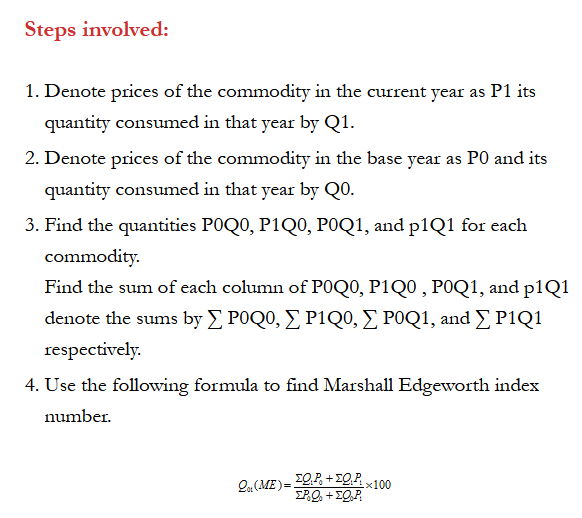Simple Average or Price Relatives Method
In this method, we find out the price relative of individual items and average out the individual values. Price relative refers to the percentage ratio of the value of a variable in the current year to its value in the year chosen as the base.
Price relative (R) = (P1÷P2) × 100
Here, P1= Current year value of item with respect to the variable and P2= Base year value of the item with respect to the variable. Effectively, the formula for index number according to this method is:
P = ∑[(P1÷P2) × 100] ÷N
Here, N= Number of goods and P= Index number.
Weighted index method
Weighted Aggregate Method
Here different goods are assigned weight according to the quantity bought. There are three well-known sub-methods based on the different views of economists as mentioned below:
Laspeyre’s Method
Laspeyre was of the view that base year quantities must be chosen as weights. Therefore the formula is :
P = (∑P1Q0÷∑P0Q0)×100
Here, ∑P1Q0= Summation of prices of current year multiplied by quantities of the base year taken as weights and ∑P0Q0= Summation of, prices of base year multiplied by quantities of the base year taken as weights.
Paasche Index Number
The Paasche Price Index is a consumer price index used to measure the change in the price and quantity of a basket of goods and services relative to a base year price and observation year quantity. Developed by German economist Hermann Paasche, the Paasche Price Index is commonly referred to as the “current weighted index.”
Formula for the Paasche Price Index
The formula for the index is as follows:

Where:
- Pi,0 is the price of the individual item at the base period and Pi,t is the price of the individual item at the observation period.
- Qi,t is the quantity of the individual item at the observation period.
Marshall Edgeworth Index Number

3 thoughts on “Simple Average or Price Relative Method, Weighted index method”